I first started working on this recipe about a year ago. I can still remember all the flat and hard as a rock scones. call it ignorance, but I really had no idea what I was in for when I set out to create a fantastic scone. well, lucky for me (and for you), i have made all the terrible scones, so you can have the savory perfect scone. the perfect herb de provence scone.
what is herbs de provence?
this is a blend of various dried, aromatic herbs. traditionally, this blend is made of: thyme, basil, rosemary, tarragon, savory, marjoram, and oregano. named for the provincial region in France. this blend of dried herbs is lovely to flavor meats, soups, stews and now....scones!
you do not have to use this blend in order to make these herb de provence scones. in fact, this scone is incredibly delicious without this added blend of spices. however, its flavor pairs perfectly with the slightest sweet buttery note found in the scones. it is a French spice blend after all....they practically invented the butter in everything cooking philosophy!
what makes a great scone?
a great scone should have a few things going for it. it should be:
- golden on the outside
- light, tender and flaky on the inside
- it should have a solid structure
- a short crumb, with the slightest crumble
in short, the perfect scone can be rather elusive if you don't use the right ingredients, keep it at the right temperature or mess with it too much. trust me, ive been down that road.
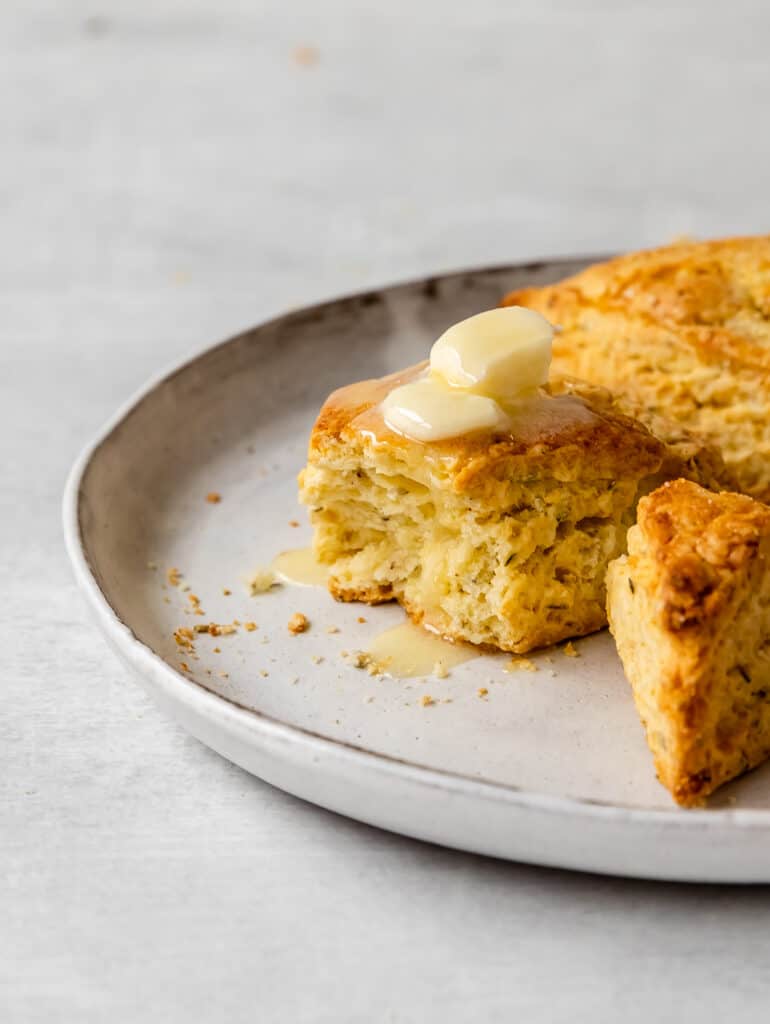
tell me the secrets to make a great scone....
to make a great scone, you HAVE to remember a few things:
- keep your ingredients COLD, always and with everything
- to make them properly and perfectly each time, you have to go by hand. no short cuts on this!
- use a flour that's meant to make pie crusts or biscuits. all purpose works in a pinch. but, pastry, cake or self rising flour is going to give you a great scone every time
- use must use butter. do not try margarine. frozen coconut butter could work. although, I haven't tried this method
- give the dough time to rest and get cold
- rising agents: this is more a matter of preference. i personally have great success when I use a pinch of baking powder and one egg
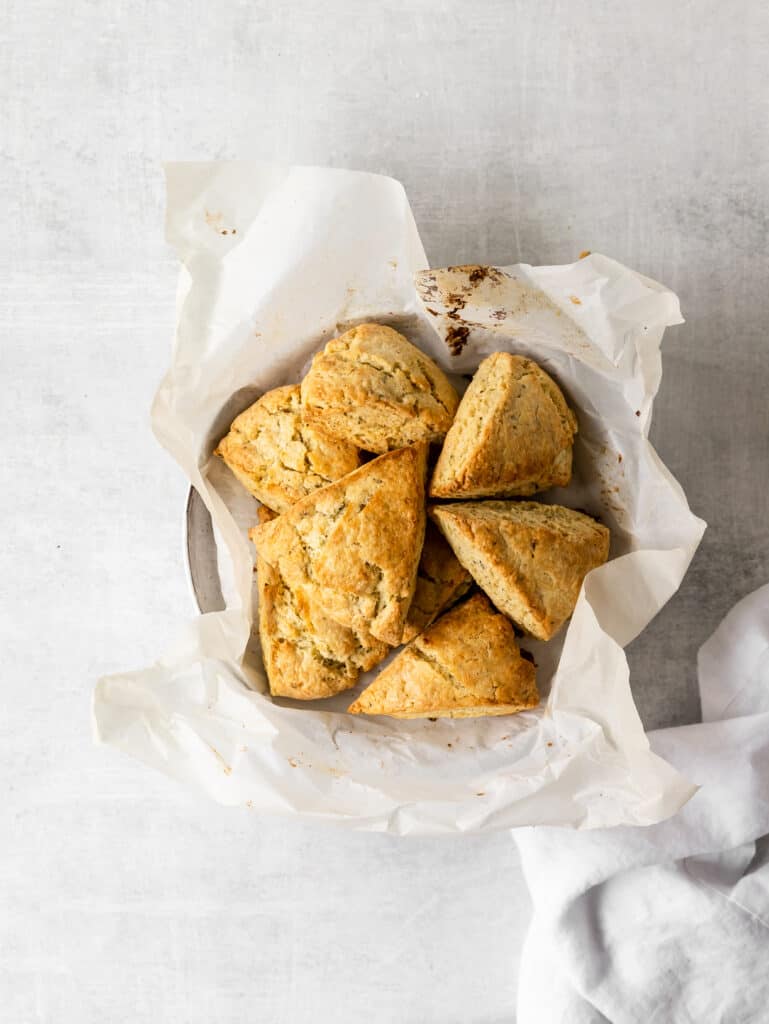
do I need special tools to make a great scone?
in short, no. in reality, there is a kitchen tool I didn't own until a few months ago. I picked it up while in target shopping for photo props. in fact, I bought it to BE a photo prop. but, now I can't imagine making a flaky pastry or pie crust without it.
a pastry cutter is one of those tools that you think you don't need until you finally do use one. yes, its a bit of work to cut the butter into the dough. but, ive taken to liking it more than I thought I would. its almost therapeutic- running the cutter through the flour + butter mixture. it works magic every single time.
other options include:
- your hands: which are hot and we're trying to keep everything super cold
- food processor: works perfectly fine for this. but, you'll want to transfer the mixture to a bowl before adding any wet ingredients
- two knives: I have not tried this technique, but it seems to follow the same basic idea as the other methods
another basic tool i recommend for this is a box grater. this helps tremendously when getting the butter to a good size for cutting into the flour. use the medium hole side. the side that gives you finely shredded cheese.
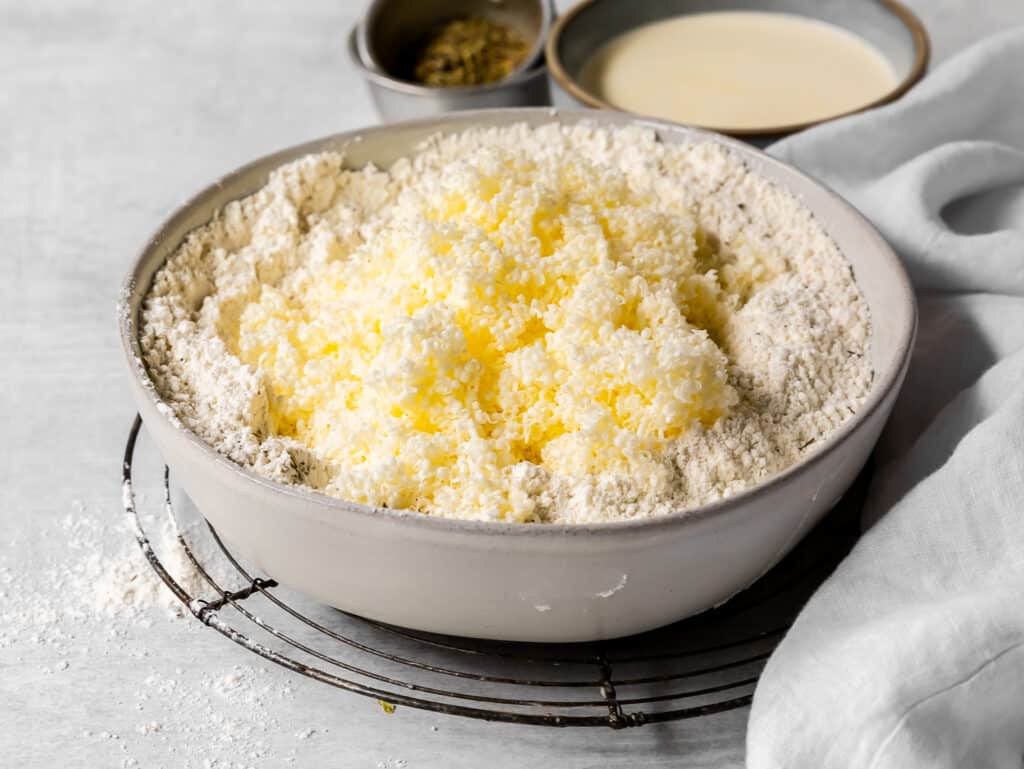
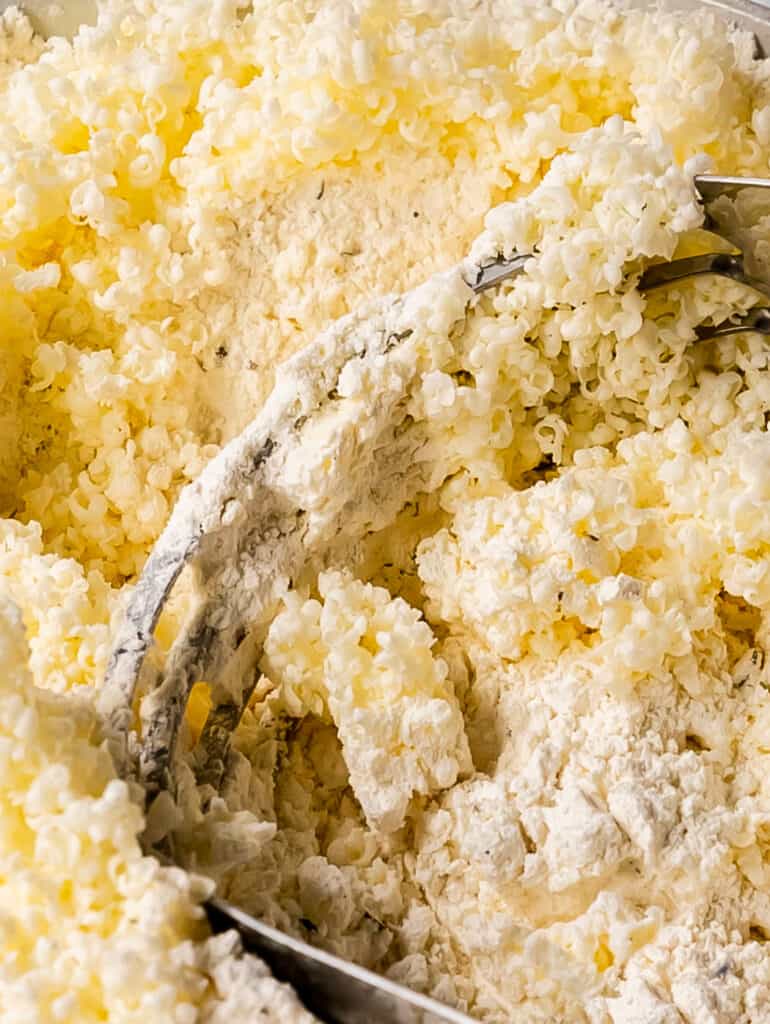
a few extra tips for the perfect herbs de provence scones...
- pastry flour: if you can, use this or self rising flour. these flours are meant to be made into biscuits and scones
- all purpose flour: this works, too. especially now when flour is a bit hard to find
- butter: you must use butter. in fact, you will be using ½ a cup (8tbsp) and it will be worth every single bit. promise. plus, it helps the scones rise and this. is. good.
- cold ingredients: i mean, COLD. frozen even. I use frozen butter in fact. keep everything as cold as possible while making scones. if the dough gets too sticky, put it in the freezer for 10-15 minutes
- mixing wet into dry: once you reach this step and the dough just comes together, try not to touch it too much. you want to shape and create layers while touching as little as possible
- floured surface: lightly flour the surface you will be shaping the dough on by grabbing a pinch of flour; in short sideways bursts, release the flour onto the clean surface. if the top of the dough is sticky, repeat this on the dough itself. don't flour too much or the ratio will be off
- chill time: this is when your dough gets to collect itself. let it rest and get cold. this helps it puff up in the oven
- cutting the scones: to get a perfect slice, dust a dough scraper or long, sharp knife with flour. slice down and then up. don't twist. repeat.
just a few more...
- preheat the oven: most ovens, even modern ones, need at least 20-25 minutes to preheat to the desired temperature. when you pop these into the freezer to chill, turn the oven on
- oven temperature: you want the temperature to be somewhere around 375-400F. each time I make scones, 375F for 15-18 minutes works for me. watch the scones. they should be golden, but not burned. if this time doesn't work, check back each minute until they are
- rest on the hot baking sheet for 1 minute to set. cool any remaining time on a cooling rack
- top with more butter: optional, but not. jam is also a great addition
- if you're looking for a sweet scone, check out my raspberry almond streusel scone!
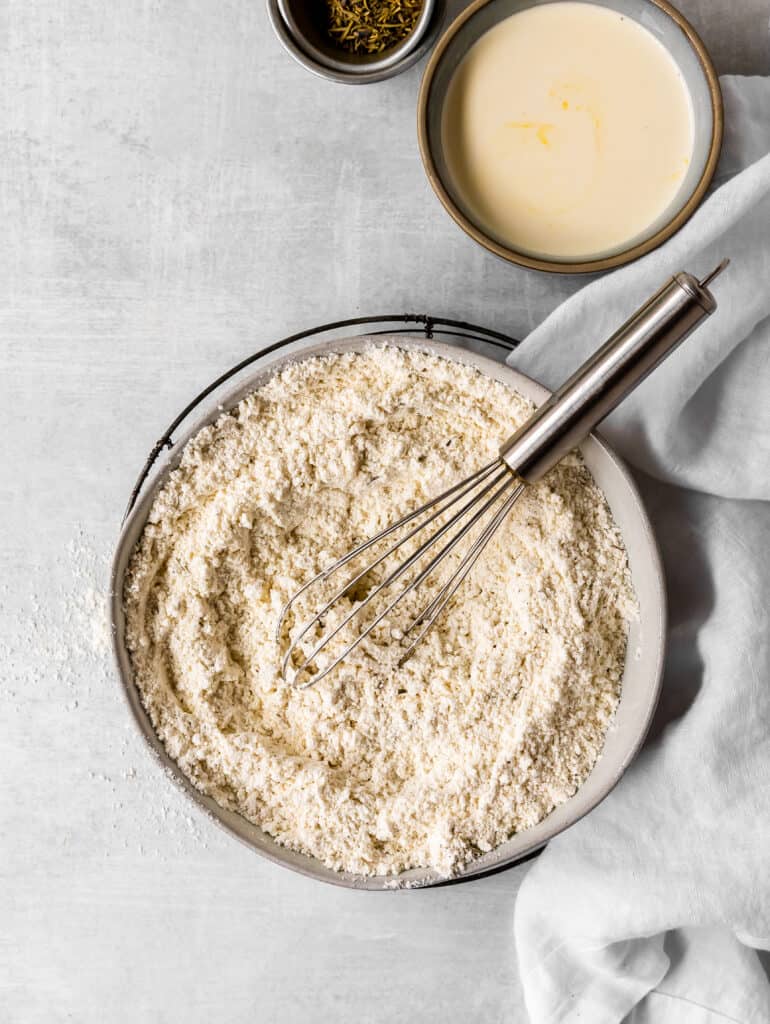

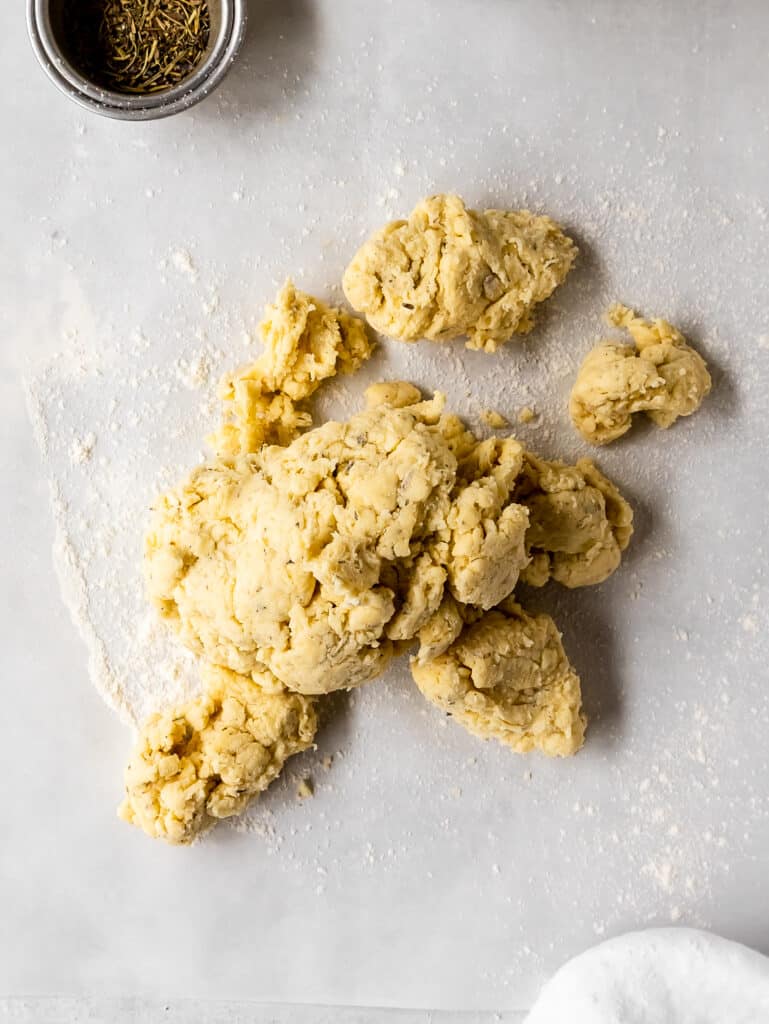
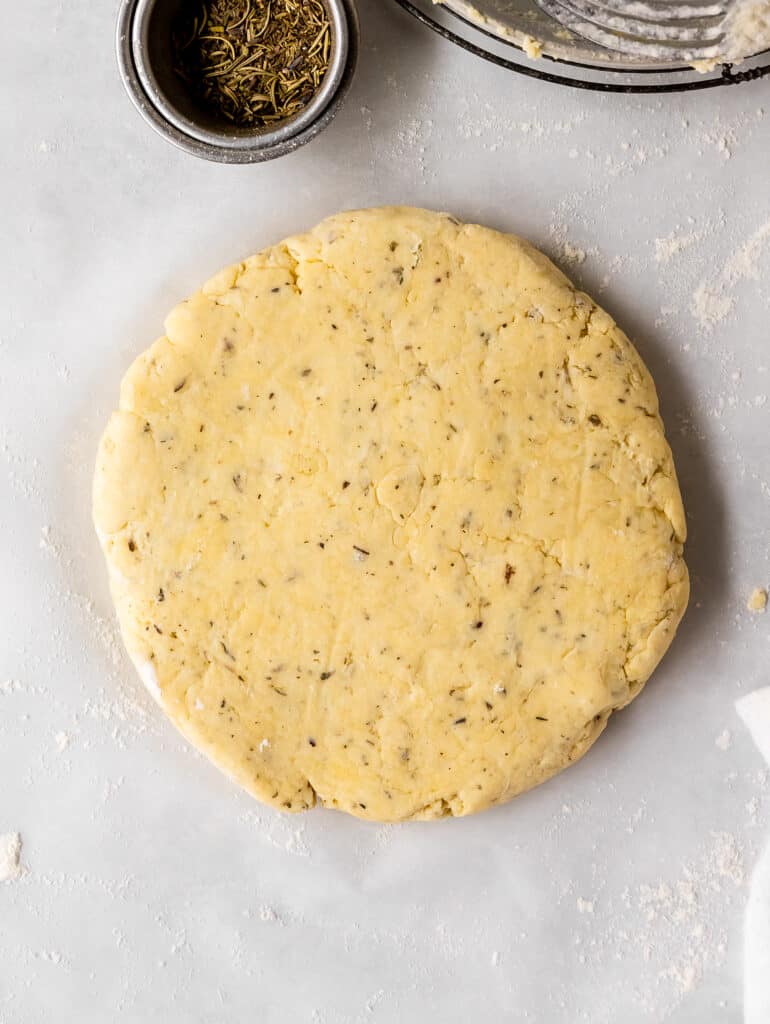
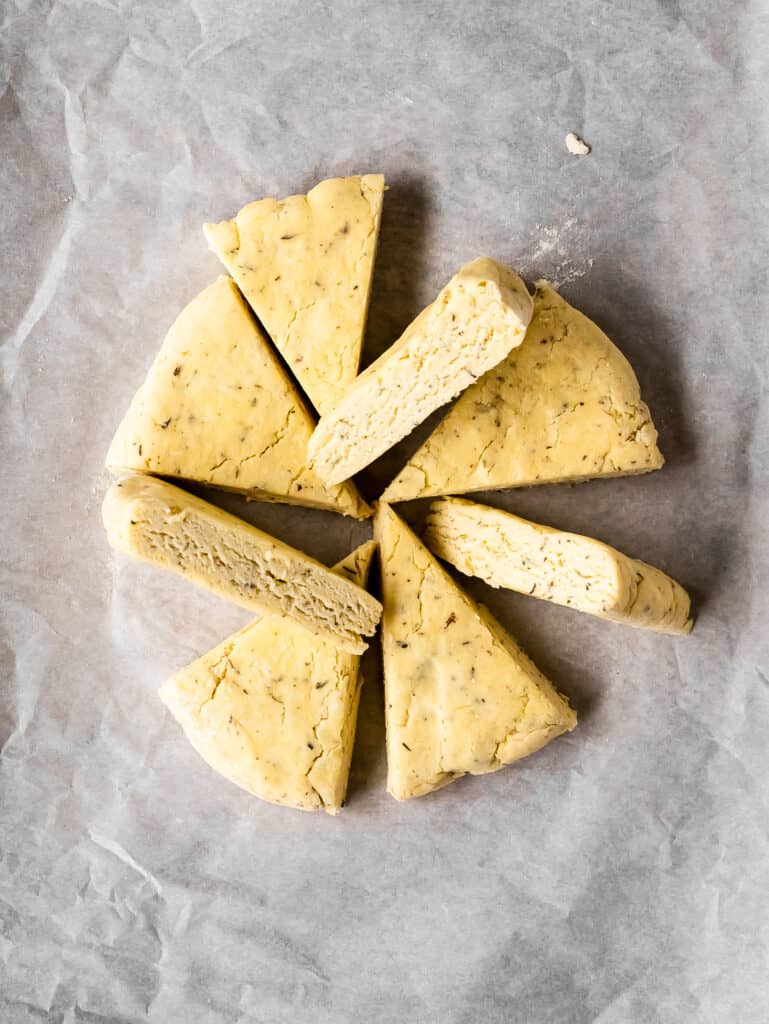

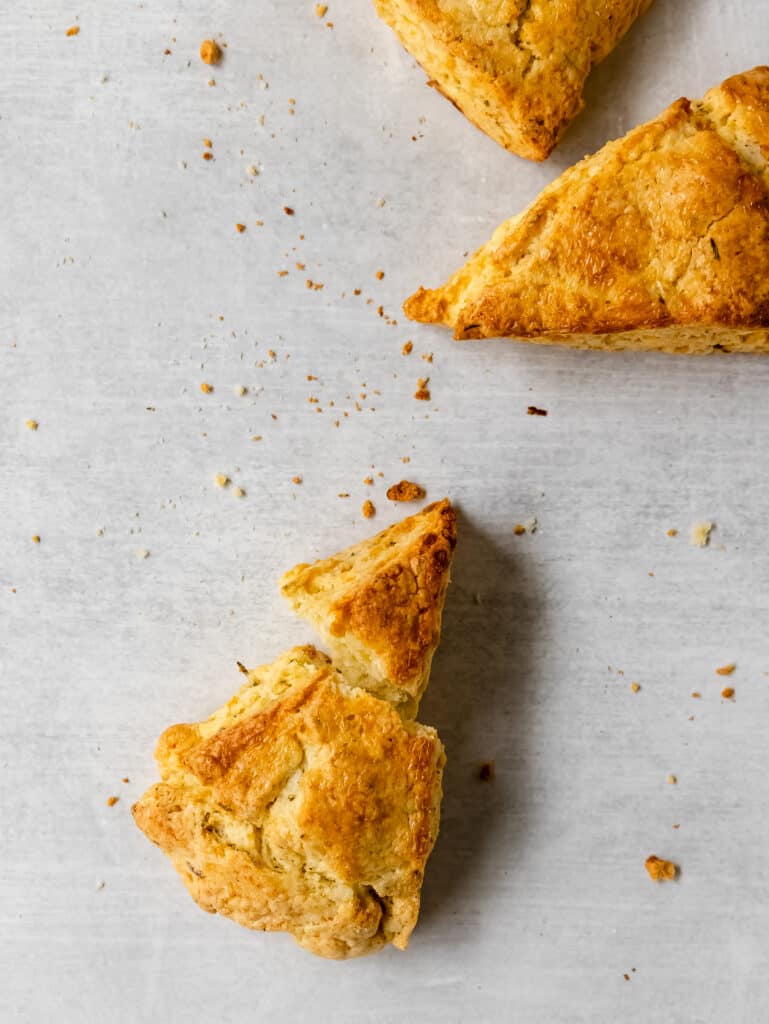
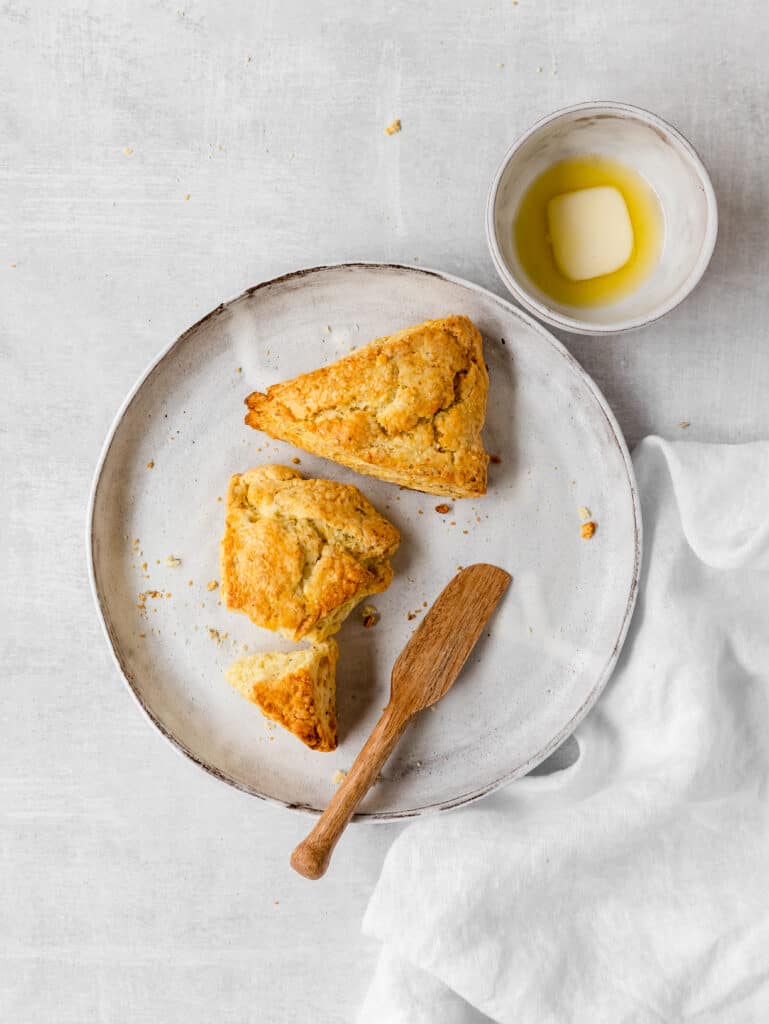
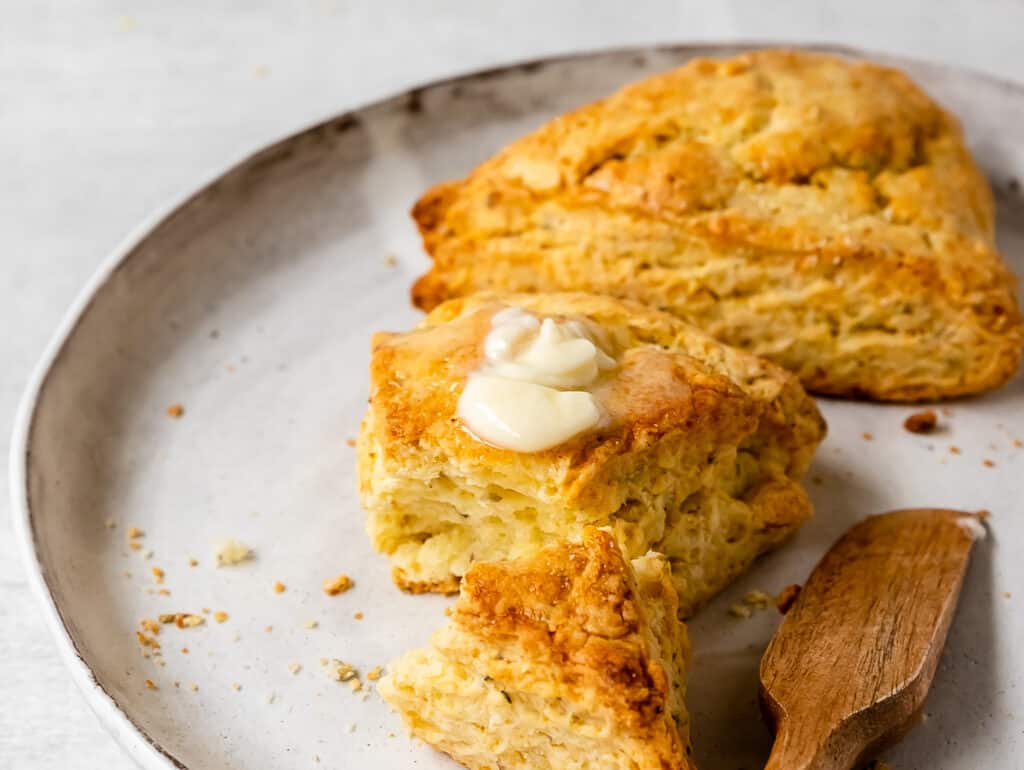
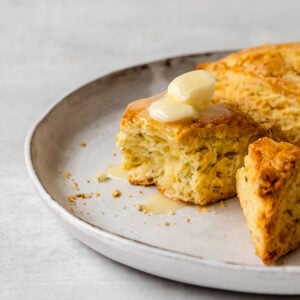
herbs de Provence scones
Equipment
- pastry cutter
- box cheese grater
- baking sheet
- parchment paper
Ingredients
scones
- 2 c pastry flour (272g), more for dusting sub with self rising or all purpose
- 1 tablespoon sugar
- 2 tsp baking powder
- ½ tsp salt
- ½ - 1 tablespoon dried herbs de provence
- 8 tbsp frozen butter, grated
- ½ c heavy cream (+1 tablespoon for brushing scones)
- 1 egg, lightly beaten
Instructions
- In a mixing bowl, whisk together flour, herbs, baking powder and salt. Grate in rozen butter, stopping every 2-3 tablespoon to lightlty toss the grated butter into the flour. When all the butter has been grated in, use a pastry cutter to work the butter into the flour mixture. Work in until the butter is fully incorporated and the mixture resembles corse sand.
- In a seperate bowl, combine the heavy cream and lightly beaten egg.
- Stream ½ cream and egg mixture into the flour/butter mixture. Incorpotate. Add remaining cream/egg mixture. Mix until the dough just comes together.
- Pour dough onto a lightly floured surface.Gently shape the dough into a ball. Gently press down the dough from middle to edges to form a disk. Fold in half. Repeat gently pressing the dough back into a round disk. Fold and repeat one more time. Shape into a 7-8" disk. Place the dough disk onto a parchment lined baking sheet or plate. Chill in the freezer for 30-40 minutes.
- Preheat the oven to 375 F
- Remove scones from the freezer. Using a dough scraper or long sharp knife, cut scones into 6-8 wedges. Pull ½ -1" apart. Brush scones with the heavy cream.
- Bake in the oven at 375 F for 15-20 minutes. Scones should be a golden brown. Scones will be very fragrant (your nose will let you know when they're done!). If needed, insert a toothpick into the center of a scone. Toothpick should come out clean.
- Allow scones to cool for 1-2 minutes on the baking sheet. Transfer to a cooling rack to cool additional time as needed. Enjoy with more butter!
tag @olivesnthyme on instagram
Make sure to leave a star review below
Make sure to tag me on instagram @olivesnthyme. For more delicious dessert ideas follow me on pinterest
make sure to tag me on instagram @olivesnthyme. for more delicious dessert ideas follow me on pinterest.


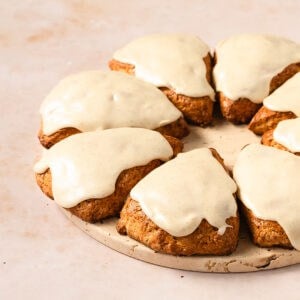


TLC+ says
Is it possible to make these gluten free using a measure for measure gluten free flour?
Megan says
Hi! I haven't tried making scones with a GF 1-1 flour blend. However, that is what they are made for, so I would definitely give it a try. Replace the total weight of the traditional flour versus the amount. Hope this helps!